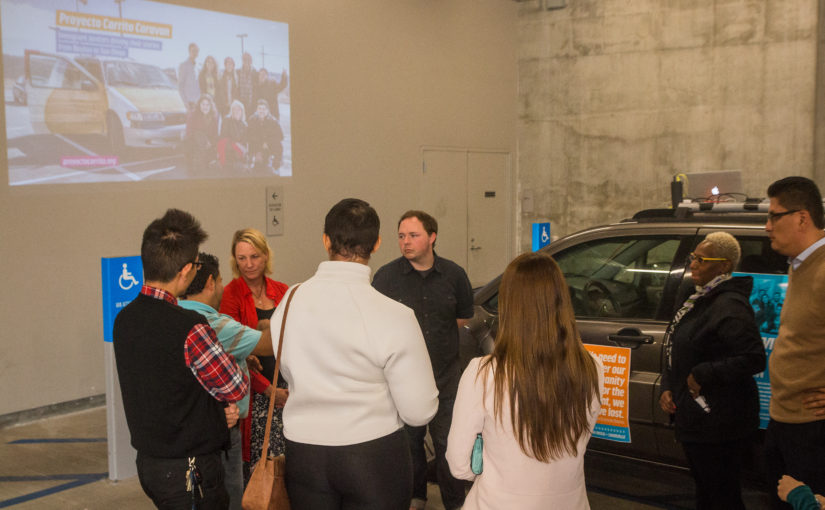What’s the connection between immigrant rights struggles and 3D scholarship? Come to the SWR Workshop at C’s to learn about Proyecto Carrito Caravan—a group of Emerson College immigrant janitors, students, faculty, and administration, who drove a car literally wrapped in the stories of immigration and dreams for a more inclusive educational system from Boston to San Diego-Tijuana border.
Wednesday, March 15
Sponsored by NCTE’s Studies in Writing and Rhetoric book series, this workshop offers both presentations and hands-on training in new publishing platforms. It is designed to create a space for participants to discuss the issues/concerns that need to be addressed into our scholarly publications as well as provide them with the opportunity to learn about as well as to experiment with building alternative forms of scholarly production.
B113
Chair: Stephen Parks, Syracuse University, Philadelphia, PA
Presenters/Speakers:
- Kristin Arola, Washington State University, Pullman, WA
- Elizabeth Brewer, Central Connecticut State University, New Britain
- Romeo Garcia, Syracuse University, Syracuse, NY
- Crystal Hendricks, Syracuse University, Syracuse, NY
- Brett Keegan, Syracuse University, Syracuse, NY
- Jason Markins, Syracuse University, Syracuse, NY
- Tamera Marko, Emerson College, Boston, MA
- Jacqueline Rhodes, Michigan State University, East Lansing
- Jody Shipka, University of Maryland, Baltimore County
- Melanie Yergeau, University of Michigan, Ann Arbor
Description: Steve Parks, editor of the SWR series, will provide a workshop overview, using the instance of Berlin’s Rhetoric and Reality to talk about the need to continually pose the relationship between emergent disciplinary insights and innovative publishing platforms. There will be 2 panel discussions, a breakout session during which participants will be able to engage one of the plenary panel speakers in discussion of specific capabilities of platforms mentioned, a discussion of a new platform that will allow for crowd-sourced history via engaging with the SWR series, and an interactive workshop during which participants consider the impact of doing something beyond, or in addition to, “thinking with (or writing about) objects”—or, as is often the case, when objects are even considered and given their due, writing about objects. Instead, participants will be exploring more fully what it might mean (and, indeed, how it feels) to actually compose with objects
Together, we will discuss how the different scholarly approaches featured throughout the day (print, digital, object-based) might intersect, support, and/or transform the field’s ability to tackle the exigent arguments and pressing concerns. Put otherwise, we explore the questions: What are the Rhetorics and Realities that need to be produced as we look to the future?
Participant Preparation: The afternoon workshop requires participants do some preparatory work in advance of the workshop. First, please bring to the workshop at least five physical objects—things you might imagine using to create an object-based, multimodal composition. These objects might range from found objects to yard-sale or thrift-store finds to everyday ephemera found around the house, workplace, or campus. Please DO NOT choose objects that you would not be willing to exchange with others or see modified or destroyed as part of the workshop’s activities. Once you’ve selected your objects, the second thing you’ll need to do is to spend time thinking about the rhetorical and material dimensions of the objects you’ve selected. Consider, for instance, how these objects function and what they mean individually. Consider, as well, how the materials might be juxtaposed, combined, and/or modified to do certain kinds of rhetorical work—for instance, to tell a story, to move someone to action, to make an argument, to warn, to amuse, etc. In addition to considering the objects’ potentials for meaning, use, and/or modification, consider as well the affective dimensions of the objects you have selected. Does the object convey or otherwise suggest a kind of sadness—is it playful, frightening, boring, provocative, etc.? Please take time to write up (or jot down, list, audio or videotape, etc.) your thoughts about and impressions of your objects.
